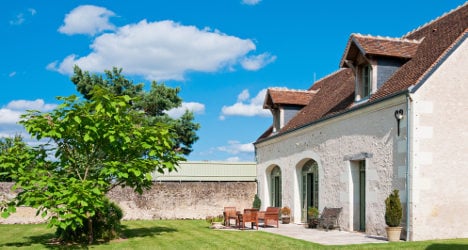In recent years many changes have happened to the property market with changes in inheritance and capital gains taxes, housing recessions, and do-it-yourself rental sites such as Airbnb competing for market space held by the classic actors such as Agents and Hoteliers.
For investment property owners and those with secondary homes in France, the latest major upheaval was personified by Ms Cécile Duflot, the former housing minister, and her eponymous law, the Loi Duflot. This law, as well as similar laws in other countries, have been described as the end to affordable holiday accommodation in France and Spain, among others.
The Loi Duflot, and indeed the Loi Alur, with which property investors and holiday home owners are more likely concerned, has caused confusion and debate since it was proposed to combat a sustainable housing shortage in the larger metropolitan areas.
After a Paris version of the new proposition was tested, the law was amended, passed and it is now rolling out to every city or agglomeration with more than 200,000 inhabitants, or 50,000 inhabitants if the property rental market is deemed “sensitive”.
To tackle the first cause of the deficit, the Loi Duflot created and modified tax incentives for new-build investment. This is tied into social housing to stimulate that sector. The second cause is a lack of available housing within the existing properties. One reason is the number of properties being bought as secondary homes for seasonal lets.
As it stands, the law affects you if you have a secondary home. You will have to apply for your secondary home to be a “Location Meublée Court Durée”, which means changing the designation of your property from a “habitation”, if you wish to rent it out on a short-term basis.
This application is done through the local urbanism bureau of the Mayor’s Office but a change was made regarding the Syndic; you now do not have to seek permission from the Syndic, although the urbanism office may check with the Syndic if the property is suitable for the new purpose.
This means that your property will be a business asset, the change of status may take some time and cost some money and the property will be inspected for quality.
Some municipalities, such as Nice and Paris, have put in place local measures to help seasonal letters to get up to norm as quickly as possible. In Nice for example, you are required to ask for a temporary two-year, renewable change of use permit.
Previously, secondary homeowners who wished to make a commercial revenue out of their property had to register their property as such.
There was always a grey area in the law which considered non-commercial renting as personal revenue. This now only applies to primary residences. For example if you Airbnb your primary residence in Paris while you are away during the summer holidays, this is considered a personal income and you would declare it as such, and receive a 50 percent statutory deduction.
This does not cover your secondary holiday residence in Nice as all income is considered professional.
Many people see this law as a detriment to the local economy and property markets. It was assumed that certain mayors would veto the law. The Loi Duflot officially passed this year, however, and most municipalities made their amendments swiftly thereafter, with some mayors exercising their right to install the measures even if it was not compulsory.
In Nice, for example, the law was adopted in its entirety installing a new temporary change of usage permit to allow secondary homeowners to rent out their properties occasionally. These permits last two years, renewable twice, for short term furnished lettings, in other words, lettings of no more than ninety days.
Outside of this authorization the property must be properly designated with a maximum penalty for non-compliance of €25,000 plus a judicial penalty of €1,000 per day until the property is re-designated. No more than 50 percent of the building can be used for this purpose.
This permit will oblige those owners have not done so to register for and declare “stay tax” on each visitor per night. This is much like the tax levied on hotel tourists.
Some owners have been understandably confused by the law and its necessity. If a property is affected by the law, the owner may choose to let the property long term, either furnished or unfurnished, without undertaking this formality.
Andy Denison is the director of the expat advice service Mon Ami Andy.



 Please whitelist us to continue reading.
Please whitelist us to continue reading.
Member comments